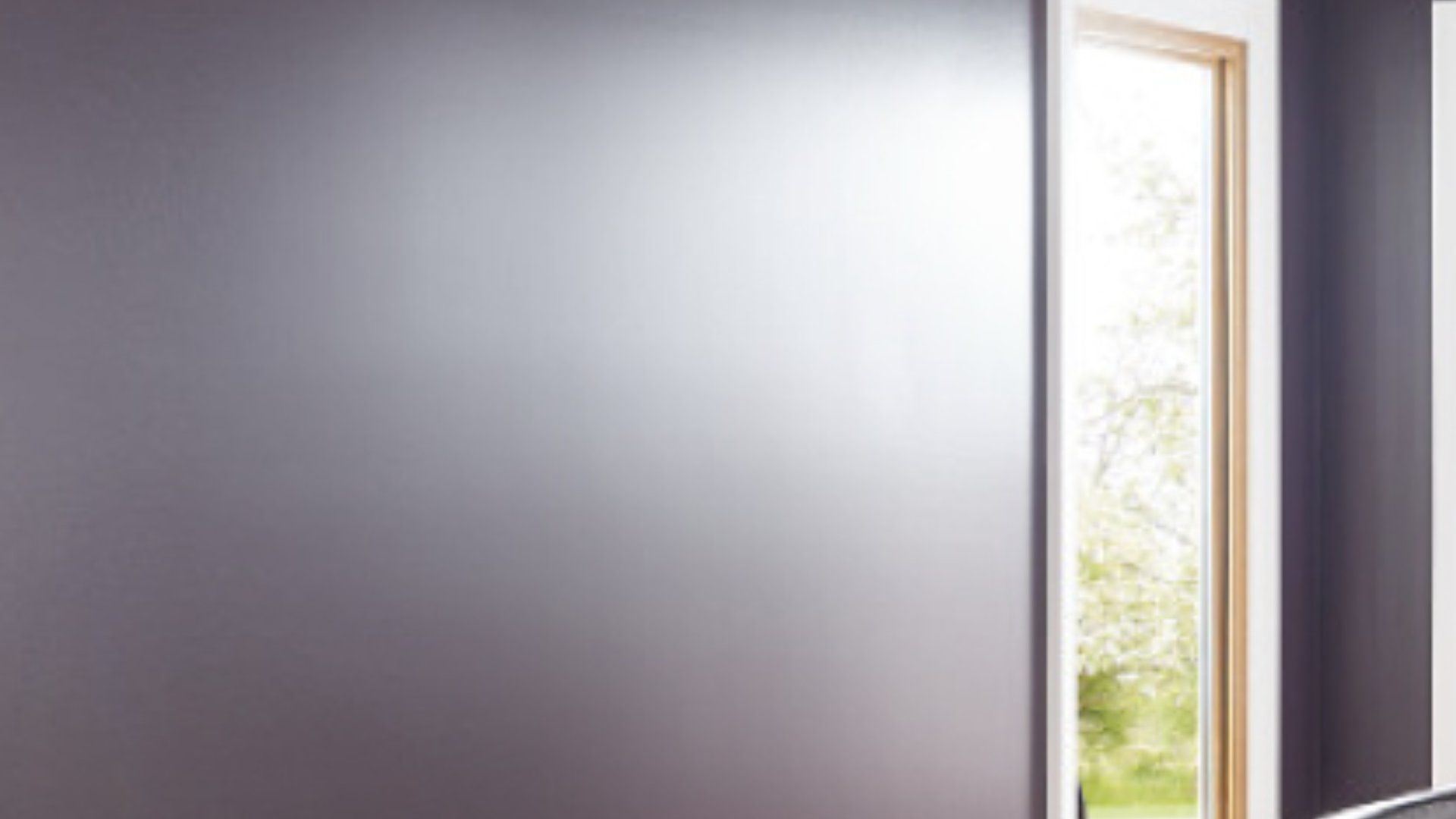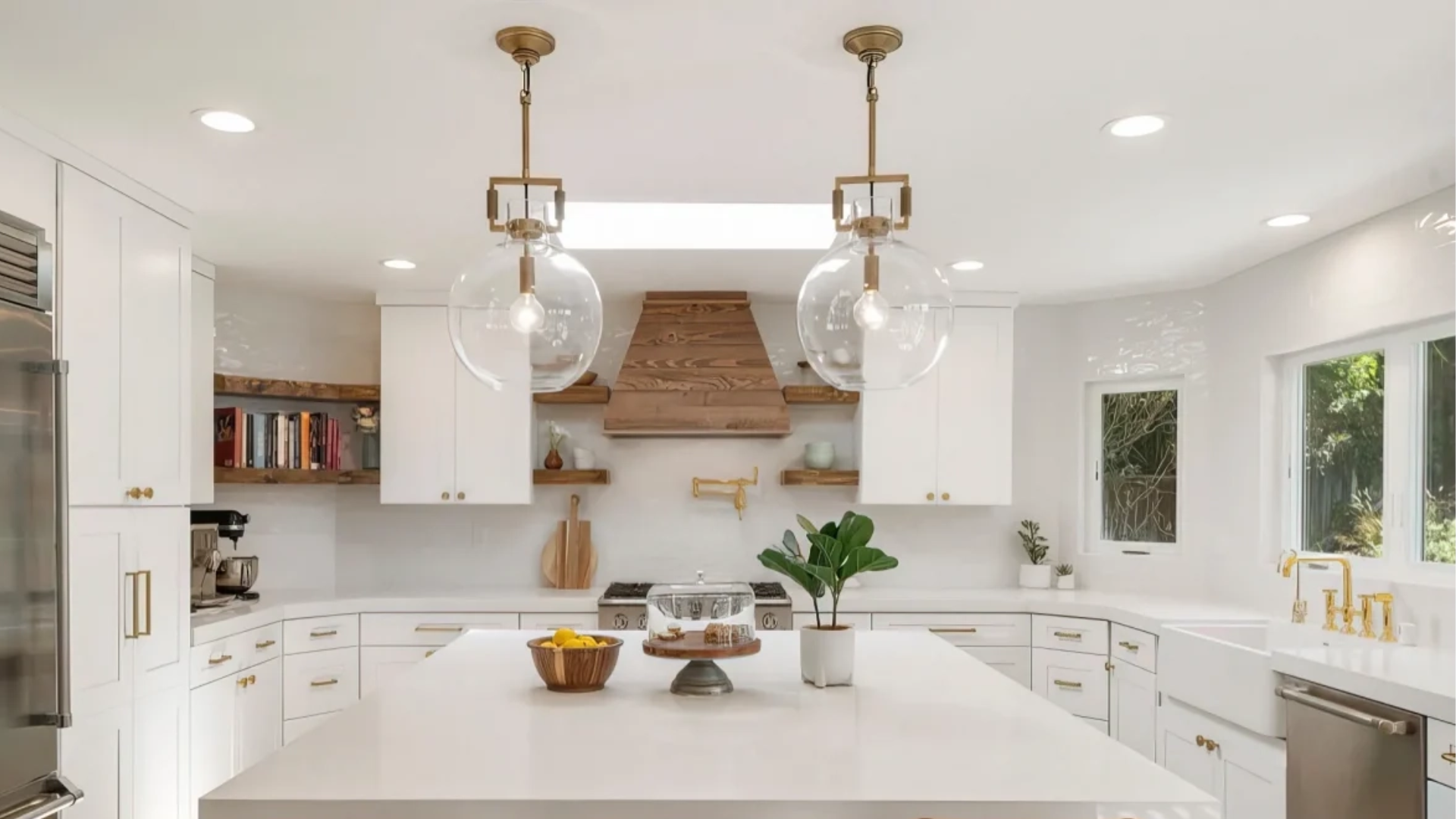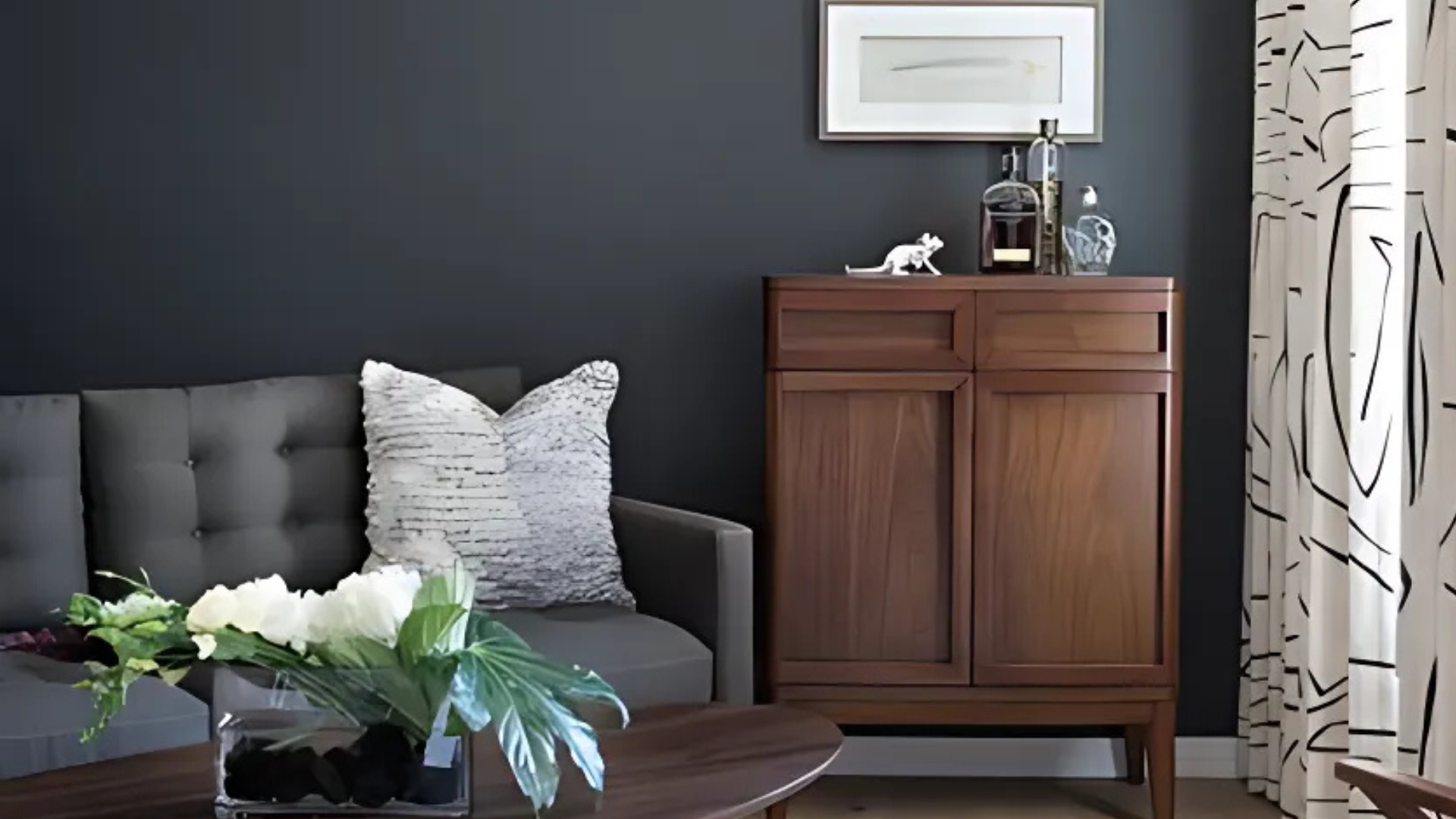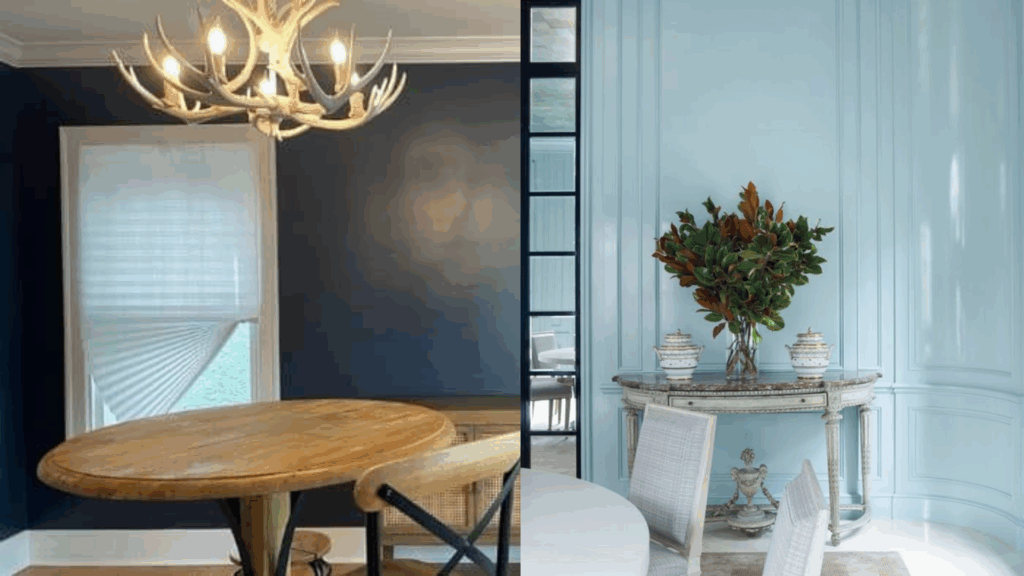When I started choosing paint finishes for my home, the difference between satin and gloss felt small until I actually used them.
These two sheens might seem similar, but they perform very differently depending on where they’re applied.
Gloss is shiny and tough, while satin is softer in appearance and more forgiving.
Picking the right one means thinking about more than just looks. It’s about how much wear a surface gets, how often it’ll need to be cleaned, and how smooth or imperfect the wall really is.
In this guide, I break down everything I’ve learned about satin and gloss finishes to help you choose the one that truly suits your space, lifestyle, and desired room ambiance every day.
What Is Satin Finish?

Satin finish is a type of paint sheen that falls between eggshell and semi-gloss on the sheen scale. It has a smooth, soft luster that offers a hint of shine without being too reflective.
This subtle sheen gives walls and trim a clean, elegant look while still maintaining a warm, inviting feel.
Satin is often chosen for its balanced appearance; it brightens up a room more than flat or matte finishes, but doesn’t highlight every surface flaw like gloss does.
It’s also known for its durability, making it suitable for areas that experience moderate foot traffic, occasional scuffs, or light moisture.
Thanks to its versatility and wipeable surface, satin is a popular choice for spaces such as hallways, children’s bedrooms, living rooms, and even bathrooms, where a combination of aesthetics and functionality is essential.
Benefits of Satin Finish
Satin paint offers the perfect balance of durability, cleanability, and subtle shine, making it a versatile choice for both walls and trim.
- Durable and long-lasting: Stands up well to daily wear, making it ideal for busy areas in the home.
- Easy to clean: Resists light stains and smudges; can be wiped down without damaging the finish.
- Soft, elegant sheen: Provides a gentle glow that adds depth and warmth to walls and trim.
- Versatile across spaces: Works well in living rooms, hallways, bedrooms, kitchens, and bathrooms.
- Enhances color richness: Slight sheen makes paint colors appear more vibrant and smooth.
- Resists mildew and moisture: Suitable for areas like bathrooms where occasional humidity is a concern.
- Refined look: Gives a polished appearance without the glare of higher-gloss finishes.
- Blends style and function: Combines beauty with practicality, offering a finish that’s both attractive and hardworking.
What Is Gloss Finish?

Gloss finish is the shiniest and most reflective paint sheen available. It reflects a high amount of light, usually around 70–90%, giving surfaces a sleek, polished appearance.
This mirror-like shine makes colors appear richer and more vibrant, and it draws attention to architectural details like trim, molding, doors, and cabinetry.
Because of its slick surface, gloss paint is extremely durable and easy to clean, resisting stains, scuffs, and moisture better than any lower-sheen finish.
However, its reflective nature also means it shows every flaw, including brush strokes, dents, and uneven surfaces, so proper prep is essential.
Gloss is best used in small areas or on well-prepared surfaces where durability and shine are priorities.
It’s a popular choice in kitchens, bathrooms, and high-traffic areas that need frequent cleaning and a long-lasting finish.
Benefits of Gloss Finish
Gloss paint delivers maximum durability, a striking reflective shine, and easy cleanability, perfect for trim, doors, and high-use areas.
- High durability: Extremely resistant to scuffs, stains, and moisture, ideal for high-use areas.
- Easy to clean: Smooth surface allows for frequent scrubbing without damaging the finish.
- Bold, reflective shine: Creates a crisp, polished look that enhances color depth and detail.
- Great for highlighting trim: Makes moldings, doors, and cabinets stand out with a sharp, clean finish.
- Long-lasting performance: Maintains its appearance over time, even in demanding environments.
- Moisture-resistant: Suitable for kitchens, bathrooms, and laundry rooms where humidity is common.
- Professional finish: Adds a sleek, upscale feel to furniture and architectural details.
- Makes spaces feel brighter: High light reflectivity can help small or dim areas appear more open.
Satin vs. Gloss: Key Differences

Satin offers a soft, elegant finish with moderate durability, while gloss provides a bold, high-shine look with superior resistance to wear and moisture.
1. Sheen Level
Satin finish has a moderate sheen that offers a smooth, soft glow, just enough to reflect light gently without looking overly shiny.
Gloss finish, by contrast, is highly reflective with a strong, mirror-like shine that gives surfaces a bold, polished appearance.
The higher sheen of gloss draws more attention and adds a sleek, modern feel, while satin creates a more understated, classic look.
2. Appearance
Satin provides a smooth and velvety look that adds a touch of elegance to walls without overwhelming the space. It enhances color subtly and gives rooms a calm, welcoming vibe.
Gloss, however, makes surfaces pop with vibrant color and crisp shine. It’s bold and eye-catching, making it perfect for accent features like trim or cabinetry where a more dramatic, reflective appearance is desired.
3. Durability
Gloss finish is highly durable, making it an excellent choice for areas that require frequent cleaning or experience high moisture levels, such as kitchens and bathrooms.
It resists stains, fingerprints, and general wear better than any lower-sheen paint.
Satin is also durable, though slightly less so, and can handle occasional cleaning and moderate traffic. It offers a good mix of resilience and beauty for spaces like hallways or family rooms.
4. Imperfection Visibility
Satin finish does a better job of minimizing the appearance of wall flaws, such as small cracks, dents, or uneven textures. Its lower reflectivity helps conceal imperfections in natural or artificial light.
Gloss, on the other hand, highlights every bump and brush stroke due to its high shine. Because of this, walls painted in gloss require smooth, well-prepped surfaces to achieve a professional and flawless look.
Where does Each Paint Finish fit best?
Different finishes serve different functions; gloss excels in high-moisture, high-contact areas, while satin works best on walls in active living spaces.
Gloss

Gloss is perfect for trim, doors, cabinets, and bathrooms where durability and easy cleaning are top priorities.
- Trim and moldings for a crisp, defined look
- Kitchen cabinets where easy cleaning is essential
- Door frames that need frequent wiping
- Bathrooms are due to high moisture and humidity resistance
Satin

Satin is ideal for walls in hallways, bedrooms, and living rooms where a balance of style and cleanability is needed.
- Hallways with moderate traffic that benefit from durability and style
- Kids’ rooms where occasional cleaning is needed without too much shine
- Living rooms and family spaces for a smooth, welcoming appearance
- Bedrooms where a soft finish enhances comfort and warmth
Satin vs. Gloss: Comparison
This table highlights the key differences between satin and gloss finishes to help you choose the right one based on sheen, durability, and use.
| Feature | Satin Finish | Gloss Finish |
|---|---|---|
| Sheen Level | Medium sheen (soft, velvety glow) | High sheen (strong, reflective shine) |
| Appearance | Smooth, subtle finish with gentle light reflection | Bold, polished look that enhances color and detail |
| Durability | Durable for moderate traffic areas; resists light stains | Extremely durable; resists moisture, stains, and heavy scrubbing |
| Cleanability | Easy to clean; suitable for occasional wiping | Very easy to clean; ideal for frequent washing |
| Imperfection Hiding | Hides small flaws better than gloss | Highlights surface imperfections and brush marks |
| Best Uses | Walls in hallways, kids’ rooms, bedrooms, and living areas | Trim, kitchen cabinets, doors, bathrooms, and other high-use surfaces |
| Light Reflection | Reflects some light; creates a soft glow | Reflects a lot of light; makes spaces feel brighter |
| Application Notes | More forgiving during application; brush marks are less visible | Requires smoother surfaces and careful prep for a flawless finish |
Which Is Right for You: Satin or Gloss Finish?
Choosing between satin and gloss comes down to how the space will be used and the look you want to achieve.
Satin is a great all-around finish that offers a smooth, elegant appearance with just enough sheen to brighten a room without highlighting flaws.
It’s perfect for walls in bedrooms, hallways, and living areas where a soft, clean look is ideal.
Gloss, on the other hand, delivers a high-shine, polished finish that’s tough, easy to clean, and moisture-resistant, best for trim, cabinets, bathrooms, and kitchens.
If durability and frequent cleaning are top priorities, gloss is the way to go. But for a more balanced, forgiving look that still holds up in active spaces, satin is a versatile and stylish option.
Consider how much traffic the room gets, how often it needs cleaning, and the overall vibe you want before deciding.
Application Tips & Troubleshooting
Proper prep, tools, and technique are essential to achieving a smooth, professional finish, especially with reflective paints like satin and gloss.
- Prep the surface thoroughly: Sand, clean, and repair all imperfections, especially when using gloss, as it highlights every flaw.
- Use a quality primer: A smooth, even base coat improves paint adhesion and helps achieve a professional finish.
- Apply paint in thin, even coats: Thick layers can lead to drips and uneven sheen, particularly with high-gloss paints.
- Use smooth, consistent strokes: This helps prevent lap marks and visible brush lines, especially in satin or gloss applications.
- Work in manageable sections: Keeping a wet edge reduces overlap lines and streaks as the paint dries.
- Choose the right tools: Use high-quality brushes or rollers appropriate for the finish to get the smoothest result.
- Test the color and sheen in different lighting: Gloss and satin finishes can look very different depending on the light in the room.
- Allow full drying time between coats: Rushing the process can result in uneven texture or sheen inconsistencies.
Conclusion
Choosing between satin and gloss comes down to how you want your space to look and perform.
I’ve seen how gloss can completely transform trim and cabinets with its sleek shine, while satin brings a soft, stylish finish that’s easy to live with every day.
If you’re painting a high-traffic or moisture-prone area, gloss is hard to beat.
For general living spaces, satin offers just the right balance. Take a look at your room, think about the lighting, traffic, and how much cleaning it’ll need.
Once you decide, prep your surface well, pick the right tools, and apply with care. The payoff is a beautiful, durable finish that elevates the whole space.
Ready to start your next paint project? Grab a sample, test it on your wall, and bring your vision to life, one brushstroke at a time.
Have questions? Reach out, I’m happy to help.

